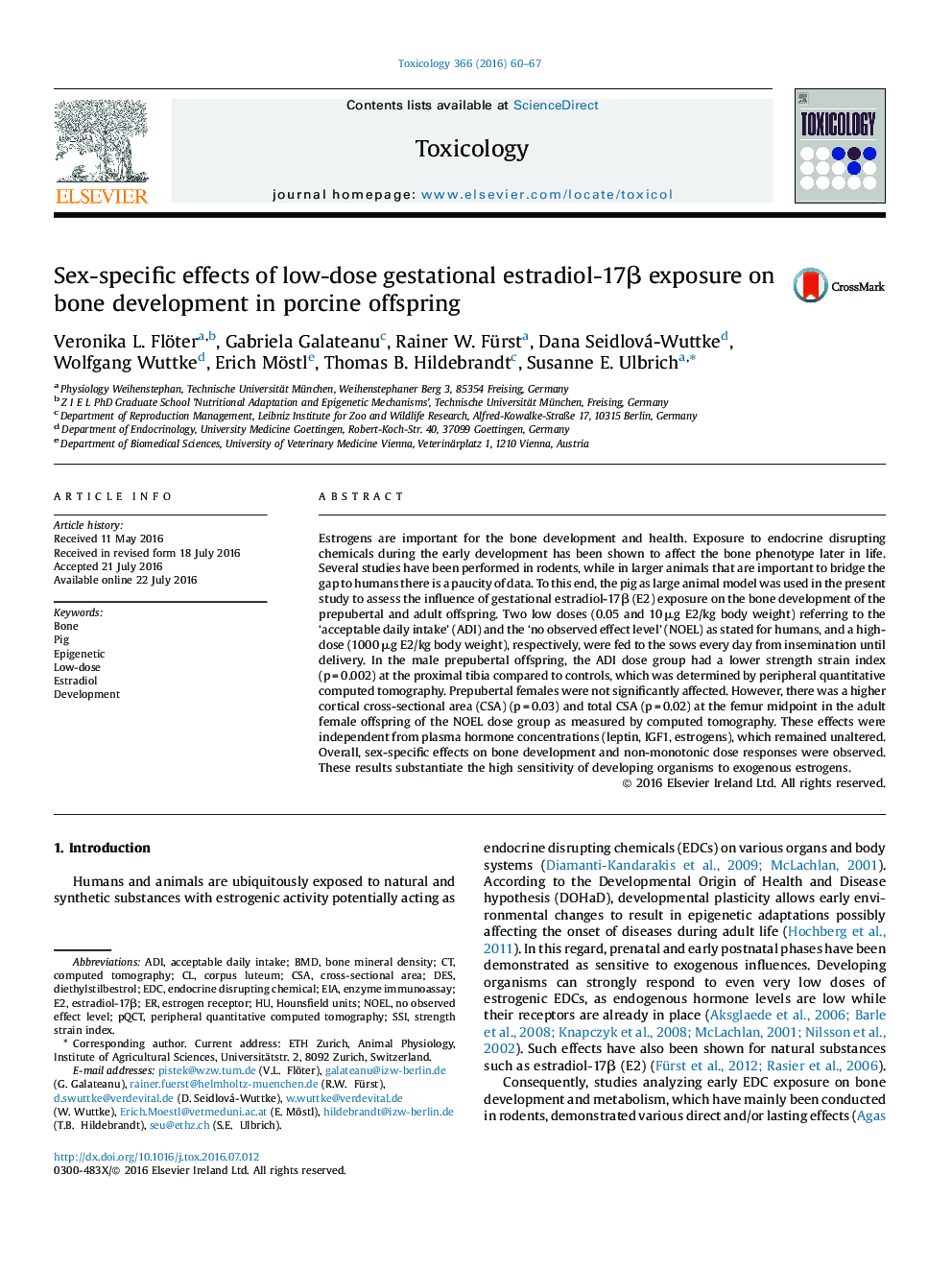| Article ID | Journal | Published Year | Pages | File Type |
|---|---|---|---|---|
| 2595400 | Toxicology | 2016 | 8 Pages |
•Sex-specific effects and non-monotonic dose responses were demonstrated after low-dose in utero E2 treatment in offspring.•Alterations in bone parameters were found in prepubertal male but not female offspring.•In postpubertal female offspring, cortical and total cross-sectional area were higher at the femoral midpoint.•In utero E2 treatment did neither significantly affect hormone concentrations nor puberty onset in offspring.•The results substantiate the high sensitivity of developing organisms to exogenous estrogens.
Estrogens are important for the bone development and health. Exposure to endocrine disrupting chemicals during the early development has been shown to affect the bone phenotype later in life. Several studies have been performed in rodents, while in larger animals that are important to bridge the gap to humans there is a paucity of data. To this end, the pig as large animal model was used in the present study to assess the influence of gestational estradiol-17β (E2) exposure on the bone development of the prepubertal and adult offspring. Two low doses (0.05 and 10 μg E2/kg body weight) referring to the ‘acceptable daily intake’ (ADI) and the ‘no observed effect level’ (NOEL) as stated for humans, and a high-dose (1000 μg E2/kg body weight), respectively, were fed to the sows every day from insemination until delivery. In the male prepubertal offspring, the ADI dose group had a lower strength strain index (p = 0.002) at the proximal tibia compared to controls, which was determined by peripheral quantitative computed tomography. Prepubertal females were not significantly affected. However, there was a higher cortical cross-sectional area (CSA) (p = 0.03) and total CSA (p = 0.02) at the femur midpoint in the adult female offspring of the NOEL dose group as measured by computed tomography. These effects were independent from plasma hormone concentrations (leptin, IGF1, estrogens), which remained unaltered. Overall, sex-specific effects on bone development and non-monotonic dose responses were observed. These results substantiate the high sensitivity of developing organisms to exogenous estrogens.
